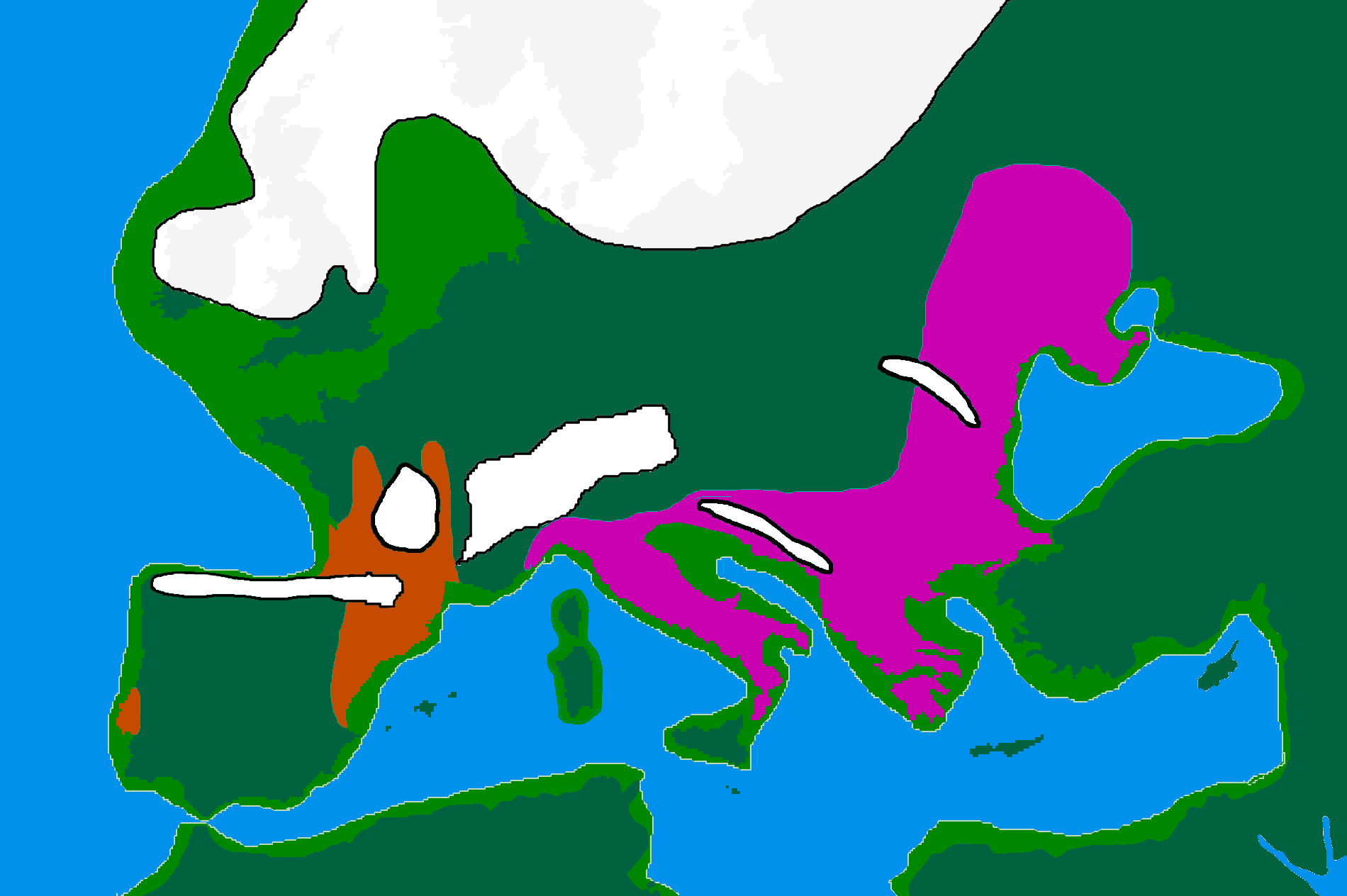
Refugium (population biology)
In biology, a refugium (plural: refugia) is a location which supports an isolated or relict population of a once more widespread species. This isolation (allopatry) can be due to climatic changes, geography, or human activities such as deforestation and overhunting.
For other uses, see Refugium (disambiguation).
Present examples of refugial animal species are the mountain gorilla, isolated to specific mountains in central Africa, and the Australian sea lion, isolated to specific breeding beaches along the south-west coast of Australia, due to humans taking so many of their number as game. This resulting isolation, in many cases, can be seen as only a temporary state; however, some refugia may be longstanding, thereby having many endemic species, not found elsewhere, which survive as relict populations. The Indo-Pacific Warm Pool has been proposed to be a longstanding refugium, based on the discovery of the "living fossil" of a marine dinoflagellate called Dapsilidinium pastielsii, currently found in the Indo-Pacific Warm Pool only.[1]
For plants, anthropogenic climate change propels scientific interest in identifying refugial species that were isolated into small or disjunct ranges during glacial episodes of the Pleistocene, yet whose ability to expand their ranges during the warmth of interglacial periods (such as the Holocene) was apparently limited or precluded by topographic, streamflow, or habitat barriers[2][3][4]—or by the extinction of coevolved animal dispersers.[5] The concern is that ongoing warming trends will expose them to extirpation or extinction in the decades ahead.[6][7]
In anthropology, refugia often refers specifically to Last Glacial Maximum refugia, where some ancestral human populations may have been forced back to glacial refugia (similar small isolated pockets on the face of the continental ice sheets) during the last glacial period. Going from west to east, suggested examples include the Franco-Cantabrian region (in northern Iberia), the Italian and Balkan peninsulas, the Ukrainian LGM refuge, and the Bering Land Bridge. Archaeological and genetic data suggest that the source populations of Paleolithic humans survived the glacial maxima (including the Last Glacial Maximum) in sparsely wooded areas and dispersed through areas of high primary productivity while avoiding dense forest cover.[8] Glacial refugia, where human populations found refuge during the last glacial period, may have played a crucial role in shaping the emergence and diversification of the language families that exist in the world today.
[9]
More recently, refugia has been used to refer to areas that could offer relative climate stability in the face of modern climate change.[10]
Speciation[edit]
As an example of a locale refugia study, Jürgen Haffer first proposed the concept of refugia to explain the biological diversity of bird populations in the Amazonian river basin. Haffer suggested that climatic change in the late Pleistocene led to reduced reservoirs of habitable forests in which populations become allopatric. Over time, that led to speciation: populations of the same species that found themselves in different refugia evolved differently, creating parapatric sister-species. As the Pleistocene ended, the arid conditions gave way to the present humid rainforest environment, reconnecting the refugia.
Scholars have since expanded the idea of this mode of speciation and used it to explain population patterns in other areas of the world, such as Africa, Eurasia, and North America. Theoretically, current biogeographical patterns can be used to infer past refugia: if several unrelated species follow concurrent range patterns, the area may have been a refugium. Moreover, the current distribution of species with narrow ecological requirements tend to be associated with the spatial position of glacial refugia.[11]
Past climate change refugia[edit]
Ecological understanding and geographic identification of climate refugia that remained significant strongholds for plant and animal survival during the extremes of past cooling and warming episodes largely pertain to the Quaternary glaciation cycles during the past several million years, especially in the Northern Hemisphere. A number of defining characteristics of past refugia are prevalent, including "an area where distinct genetic lineages have persisted through a series of Tertiary or Quaternary climate fluctuations owing to special, buffering environmental characteristics", "a geographical region that a species inhabits during the period of a glacial/interglacial cycle that represents the species' maximum contraction in geographical range," and "areas where local populations of a species can persist through periods of unfavorable regional climate."[14]